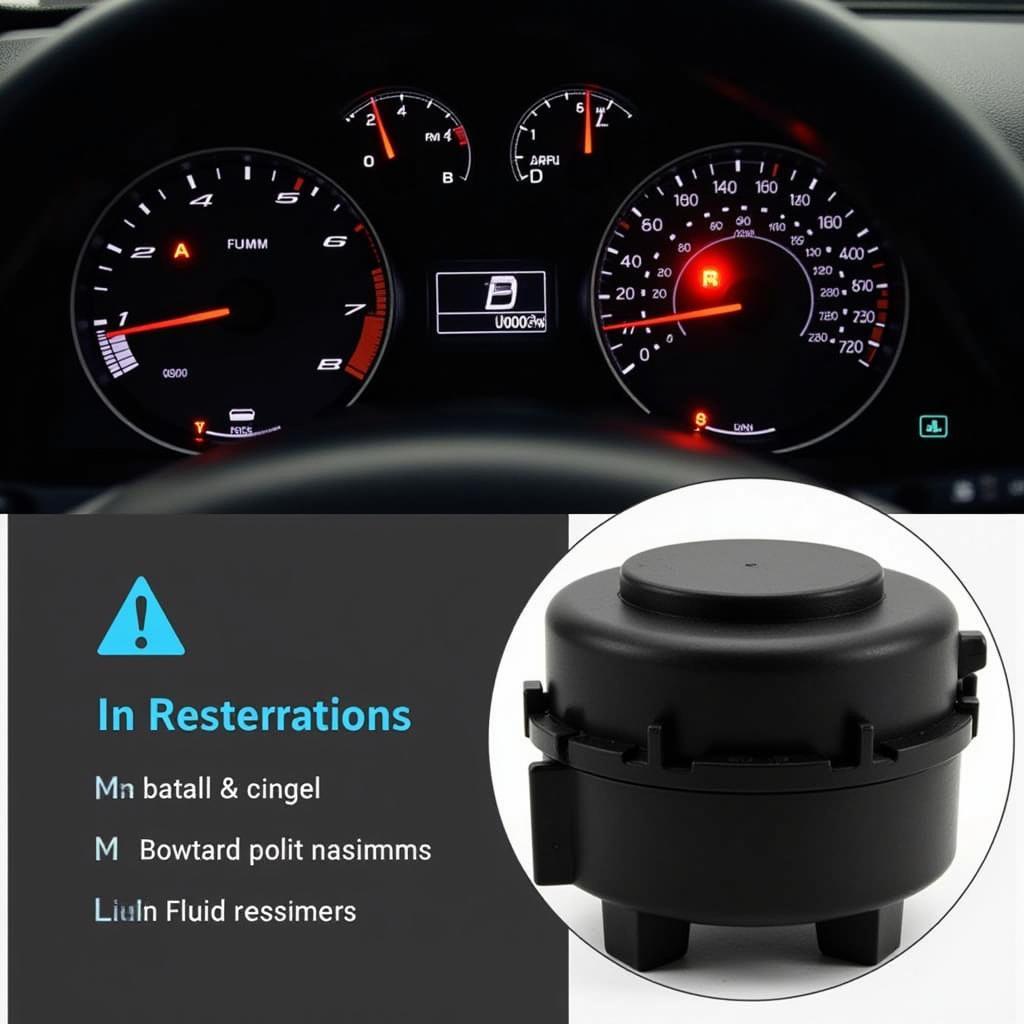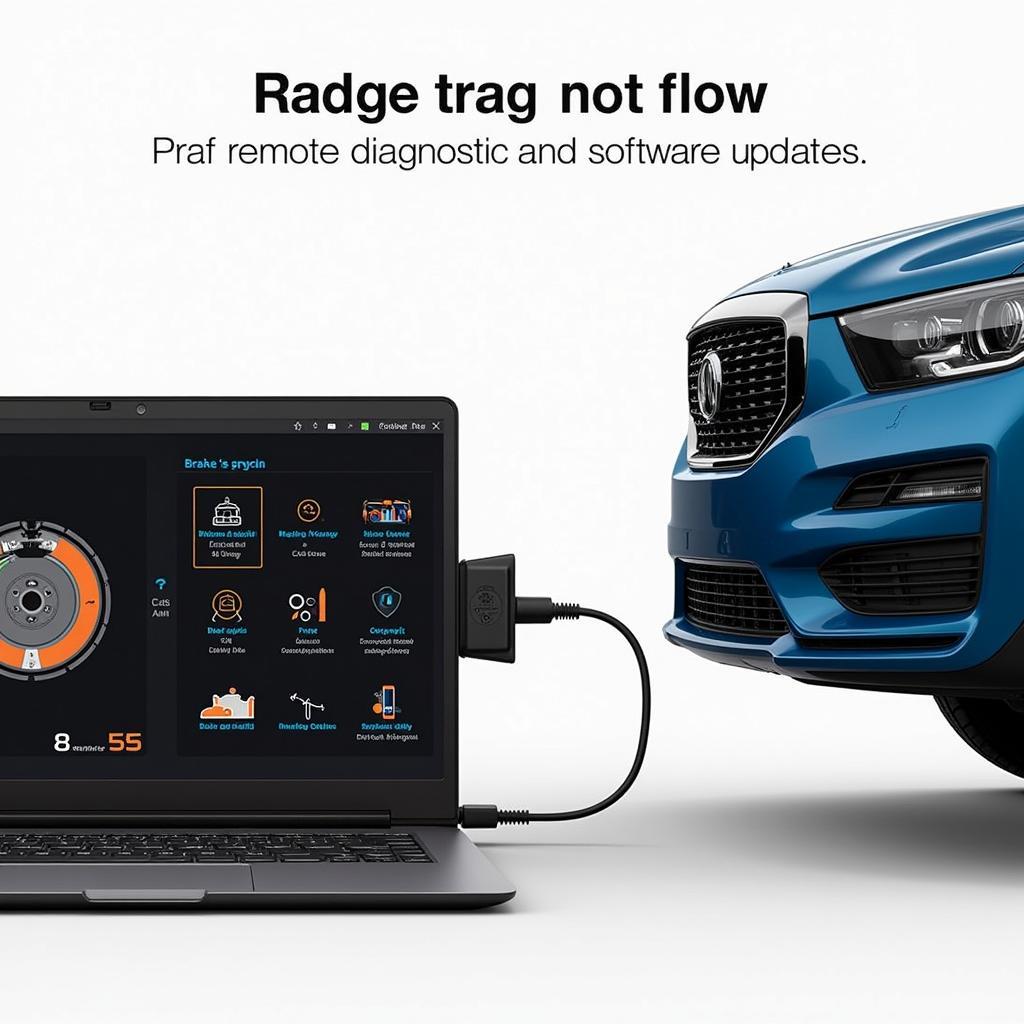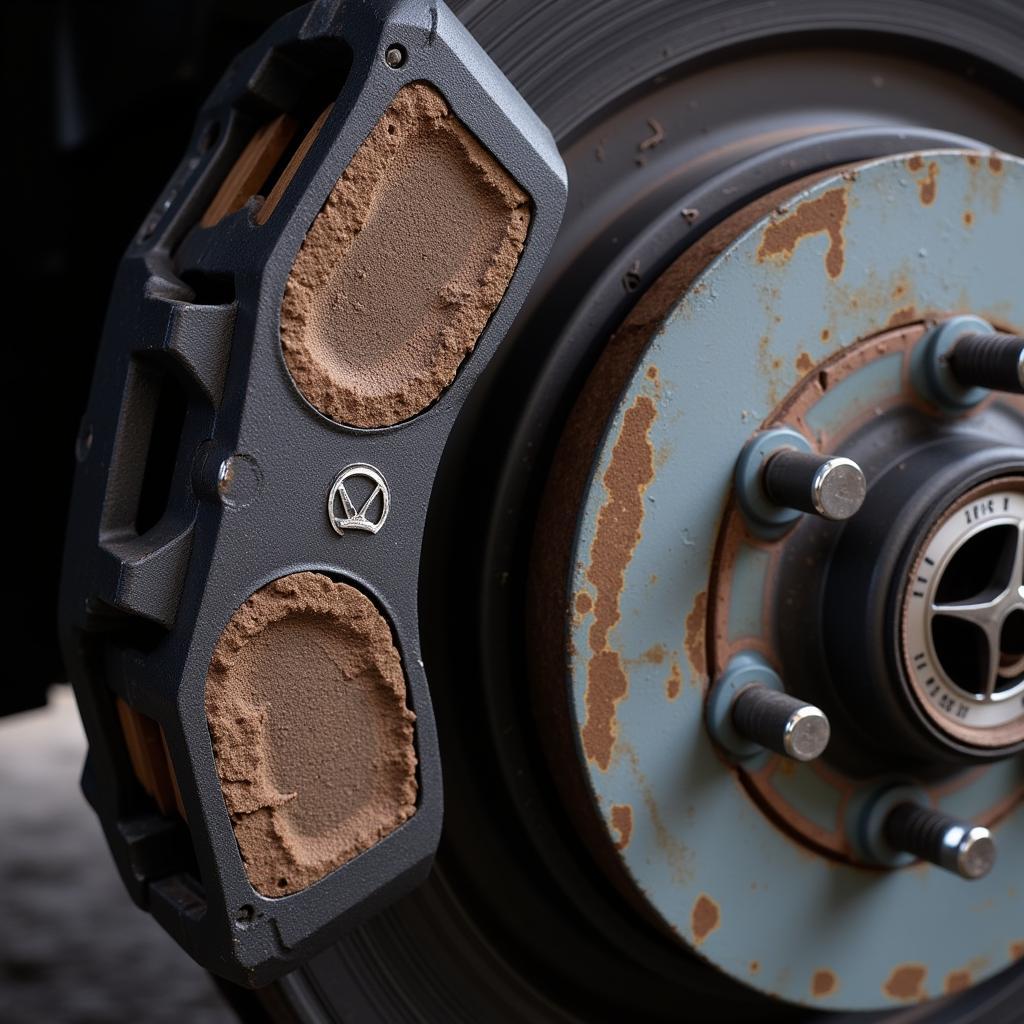Your heart skips a beat. You’re driving along, and suddenly, that dreaded brake warning light illuminates your dashboard. Why is my brake warning light on? It’s a signal you can’t ignore, and understandably, it can be quite alarming. This article will delve into the common reasons behind this warning light and guide you on how to address them, ensuring your safety on the road. We will also discuss some advanced diagnostic techniques used by professionals for remote software installations and repairs. After the initial panic subsides, you need to figure out what’s triggering this warning. Let’s explore the possible culprits.
If you’re experiencing a brake pad warning light on your Mercedes, it could signify worn brake pads. Check out this helpful resource: brake pad warning light on mercedes.
Common Reasons for the Brake Warning Light
The brake warning light isn’t just a single indicator; it represents a complex system responsible for stopping your vehicle. Several factors can cause it to illuminate, ranging from simple fixes to more complex issues requiring professional attention.
Low Brake Fluid
One of the most common culprits is low brake fluid. Your brake system operates on hydraulic pressure, and if the fluid level drops too low, this pressure can be compromised, affecting braking performance. This can be due to a leak somewhere in the system or simply worn brake pads. Checking your brake fluid level is a quick and easy process. Locate the brake fluid reservoir under the hood, usually a translucent plastic container. Ensure the fluid level is between the minimum and maximum markers.
Worn Brake Pads
Brake pads are designed to wear down over time. When they reach a certain point of wear, a sensor triggers the warning light. Ignoring this warning can lead to metal-on-metal contact, damaging your rotors and significantly reducing braking effectiveness.
Faulty Brake Sensor
Sometimes, the brake sensor itself can malfunction, triggering the light even if the brake pads and fluid levels are fine. A faulty sensor will require replacement.
 Brake Warning Light Indicating Low Fluid
Brake Warning Light Indicating Low Fluid
ABS Issues
The Anti-lock Braking System (ABS) is a crucial safety feature that prevents wheel lockup during hard braking. If there’s a problem with the ABS, the warning light might come on. This could be due to a faulty sensor, a problem with the ABS module, or low ABS fluid. Diagnosing and repairing ABS issues typically requires specialized equipment and expertise.
Advanced Diagnostic Techniques
In modern vehicles, remote diagnostics and software installations play a crucial role in identifying and resolving brake system issues. Specialized software can access the vehicle’s computer system, pinpoint the root cause of the warning light, and even install software updates remotely to fix certain problems.
“Remote diagnostics have revolutionized the automotive repair industry,” says John Smith, Senior Automotive Diagnostics Engineer at Acme Auto Solutions. “We can now identify and address issues much faster and more efficiently, minimizing downtime for the vehicle owner.”
 Remote Diagnostics of a Car's Brake System
Remote Diagnostics of a Car's Brake System
If you see a forward brake warning on your dash, it’s critical to understand what it means. Find more information here: forward brake warning on the dash of the car.
What to Do When Your Brake Warning Light Comes On
First and foremost, prioritize safety. If the light comes on while driving, pull over safely as soon as possible and assess the situation. Check your brake fluid level. If it’s low, adding more fluid might temporarily resolve the issue, allowing you to drive to a repair shop. However, a low fluid level often indicates a leak, which requires professional attention. If the brake fluid level is fine, avoid driving the vehicle and contact a qualified mechanic for diagnosis and repair.
“Never ignore a brake warning light,” advises Maria Garcia, Certified Master Mechanic. “Brakes are your vehicle’s most crucial safety system. Addressing the issue promptly can prevent costly repairs and ensure your safety on the road.”
A low brake fluid warning is a serious matter. Learn more about it here: low brake fluid warning came on.
Conclusion
Understanding why your brake warning light came on is essential for maintaining your vehicle’s safety and performance. While some causes, like low brake fluid, might have simple solutions, others require professional expertise. Never ignore this warning light, as it could signify a serious problem. By taking prompt action and seeking professional help when needed, you can ensure your brakes are in optimal condition and keep yourself and others safe on the road. Remember, regular maintenance and timely repairs are crucial for preventing brake issues and ensuring a safe driving experience.
If your brake warning light came on briefly, it’s still worth investigating. Here’s an example: brake warning light came on briefly on 2013 cx-5. Collision warnings with brake support are advanced safety features. Learn more: collision warning with brake support.


